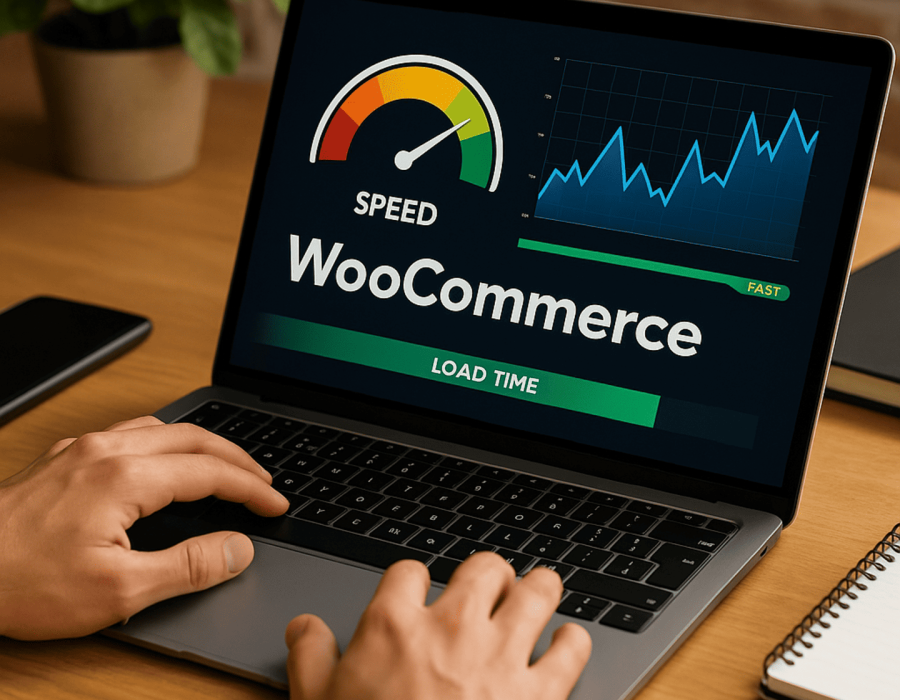WooCommerce Speed Optimization Strategies to Drive More Sales in 2026

In 2026, website speed isn’t just about performance — it’s about profit.
For eCommerce brands using WooCommerce, every extra second of load time can mean lost sales, lower rankings, and frustrated users.
According to Google’s Web Vitals research, websites that load in under 2 seconds convert nearly twice as well as slower sites. That means your WooCommerce store’s speed directly impacts SEO, ad ROI, and customer trust.
This guide walks you through the latest WooCommerce optimization strategies for 2026 — from hosting and caching to mobile performance and Core Web Vitals.
🚀 Why Speed is the #1 Growth Lever for WooCommerce Stores
The digital marketplace has evolved — and user patience has dropped.
Here’s what 2026 data tells us:
70% of shoppers leave a site if it takes more than 3 seconds to load.
A 1-second delay in load time can reduce conversions by up to 7%.
Google’s Core Web Vitals now directly influence organic ranking and ad quality scores.
“Speed now affects how well you rank, how users engage, and how much you sell.” – Search Engine Journal, 2025
A fast store doesn’t just perform better technically — it creates confidence and flow for your customers, helping them reach checkout effortlessly.
⚙️ Step 1: Start with Benchmarking
Before optimizing, you need to measure your current performance. Use these tools to get real insights:
GTmetrix — for resource breakdown
WebPageTest — for advanced analysis
Pingdom Tools — for global server speed checks
Query Monitor Plugin — for slow database queries
Key Metrics to Aim For:
✅ Page Load: under 2 seconds
✅ Largest Contentful Paint (LCP): under 2.5s
✅ Time to Interactive (TTI): under 3s
✅ Total Blocking Time (TBT): under 150ms
💻 Step 2: Choose High-Performance WooCommerce Hosting
Speed starts with the server — not the theme or plugin.
Top WooCommerce Hosting Providers (2026):
Cloudways (with DigitalOcean or AWS)
Best Practices:
Use PHP 8.2+, LiteSpeed, or NGINX servers.
Host closer to your target market (e.g., Mumbai for India, Frankfurt for Europe).
Enable Redis or Memcached for database caching.
“Invest in good hosting once — save on lost sales forever.”
🖼️ Step 3: Optimize Images & Media
Images account for nearly 70% of page weight on eCommerce sites.
Pro Optimization Tips:
Convert to WebP or AVIF for 30–50% smaller files.
Enable lazy loading for below-the-fold content.
Host videos on YouTube or Vimeo instead of self-hosting.
💡 Bonus: Add CDN-level image optimization (via Cloudflare or Bunny.net) for global speed gains.
🌐 Step 4: Enable a Content Delivery Network (CDN)
A CDN stores your content on global edge servers, reducing latency and improving load speed across regions.
Recommended CDNs for WooCommerce:
Bunny.net — great performance-to-price ratio
Enable:
✅ Image Caching
✅ Minified CSS/JS
✅ Edge Caching for faster delivery
⚡ Step 5: Minify, Combine, and Defer Files
WooCommerce uses many scripts — but you can control them.
Use plugins like:
They can:
✅ Minify HTML, CSS, JS
✅ Defer non-critical JS
✅ Delay tracking pixels
✅ Inline critical CSS
This reduces render-blocking and improves first paint metrics.
🧠 Step 6: Database Optimization
A cluttered database can slow your site — especially for large WooCommerce stores.
Remove post revisions & spam comments
Clear transients
Optimize MySQL tables
Automate weekly cleanups
Switch to InnoDB tables for faster queries and stability.
⚙️ Step 7: Layered Caching Setup
Caching improves speed dramatically by serving stored versions of your site.
Recommended Plugins:
WP Rocket
LiteSpeed Cache
W3 Total Cache
Enable:
Page Cache
Browser Cache
Object Cache (for dynamic content)
🎨 Step 8: Use a Lightweight Theme
A bloated theme kills performance.
Best Themes for 2026:
They’re lightweight (<50KB), WooCommerce-ready, and fully responsive.
💳 Step 9: Optimize Checkout Flow
Checkout speed directly impacts revenue.
Simplify it:
Enable one-page checkout
Remove extra banners & popups
Enable AJAX-based cart updates
Offer fast payment options (Razorpay, UPI, PayPal, Stripe)
Use address autofill for returning users
“A 2-second faster checkout can increase conversions by 10–15%.”
📱 Step 10: Optimize for Mobile
Mobile-first design is essential in 2026 — with 75%+ of eCommerce traffic coming from smartphones.
Action Plan:
✅ Responsive layouts
✅ AMP or PWA versions
✅ Compressed images
✅ Fewer pop-ups
✅ Optimize Core Web Vitals for mobile
🔧 Step 11: Enable GZIP or Brotli Compression
Compression reduces the size of files sent from your server to browsers.
Recommended:
Brotli (preferred in 2026) – 15–20% better than GZIP.
Easily activated via Cloudflare or your hosting control panel.
📈 Step 12: Monitor, Test & Improve Continuously
Optimization is ongoing — not a one-time fix.
Track your progress with:
Google Search Console
GA4 & Looker Studio
Core Web Vitals monitoring tools
Every time you add plugins or design changes, re-test performance metrics.
✅ WooCommerce Optimization Checklist for 2026
Fast Managed Hosting
CDN Enabled
WebP Images + Lazy Load
Page/Object/Browser Caching
CSS/JS Minified
Database Cleaned
Lightweight Theme
Optimized Checkout
Brotli Compression
Monthly Performance Audits
🔍 FAQs
Q: Which hosting is best for WooCommerce in India?
A: Cloudways (Mumbai server) and SiteGround India are top-rated.
Q: Does speed affect SEO in Chennai or Bangalore?
A: Yes, Google’s India servers prioritize faster sites for better ranking visibility.
Q: Can I use Cloudflare for WooCommerce stores in India?
A: Absolutely — Cloudflare has multiple edge servers in Mumbai, Chennai, and Hyderabad.
Q: Can BlazeDream help improve WooCommerce performance?
🏁 Conclusion
In 2026, speed is your strongest sales tool.
A fast WooCommerce store enhances SEO, improves conversions, and boosts customer satisfaction.
By combining optimized hosting, caching, compression, and intelligent design, you can achieve both performance and profit.
Ready to make your WooCommerce store lightning-fast?
BlazeDream — Crafting WooCommerce websites that load fast, rank high, and sell more.
Original source: https://www.blazedream.com/blog/woocommerce-speed-
Recommended





Comments